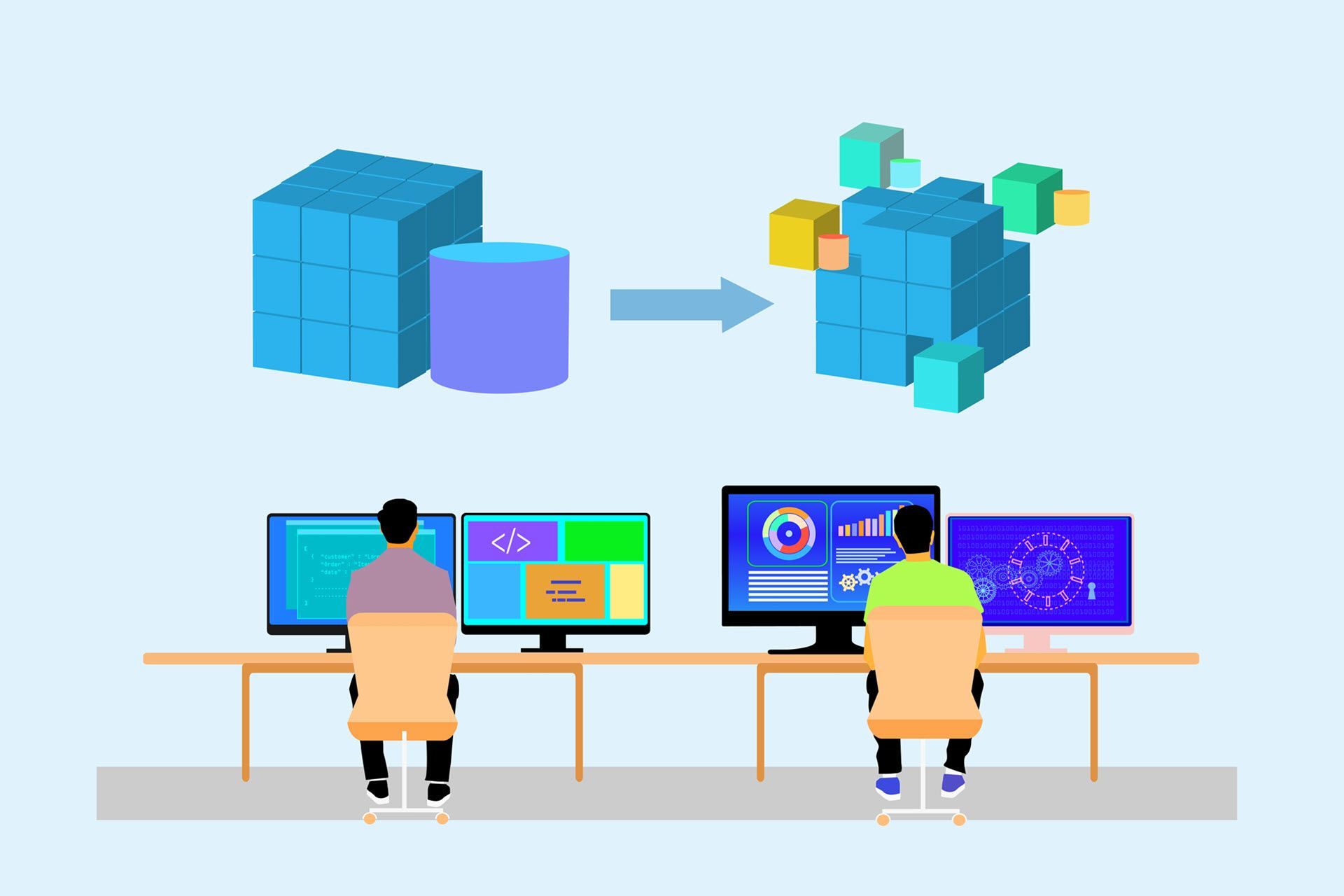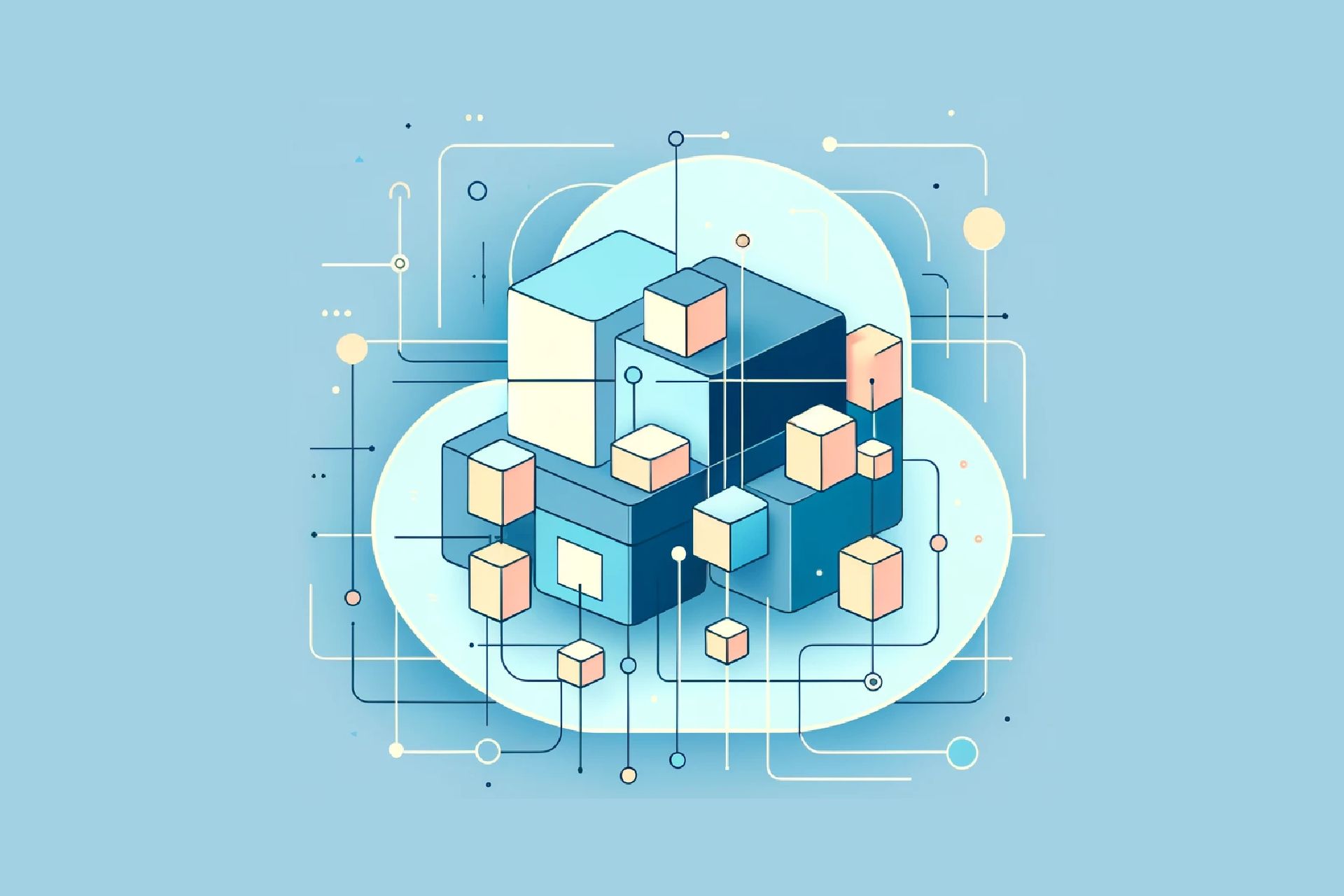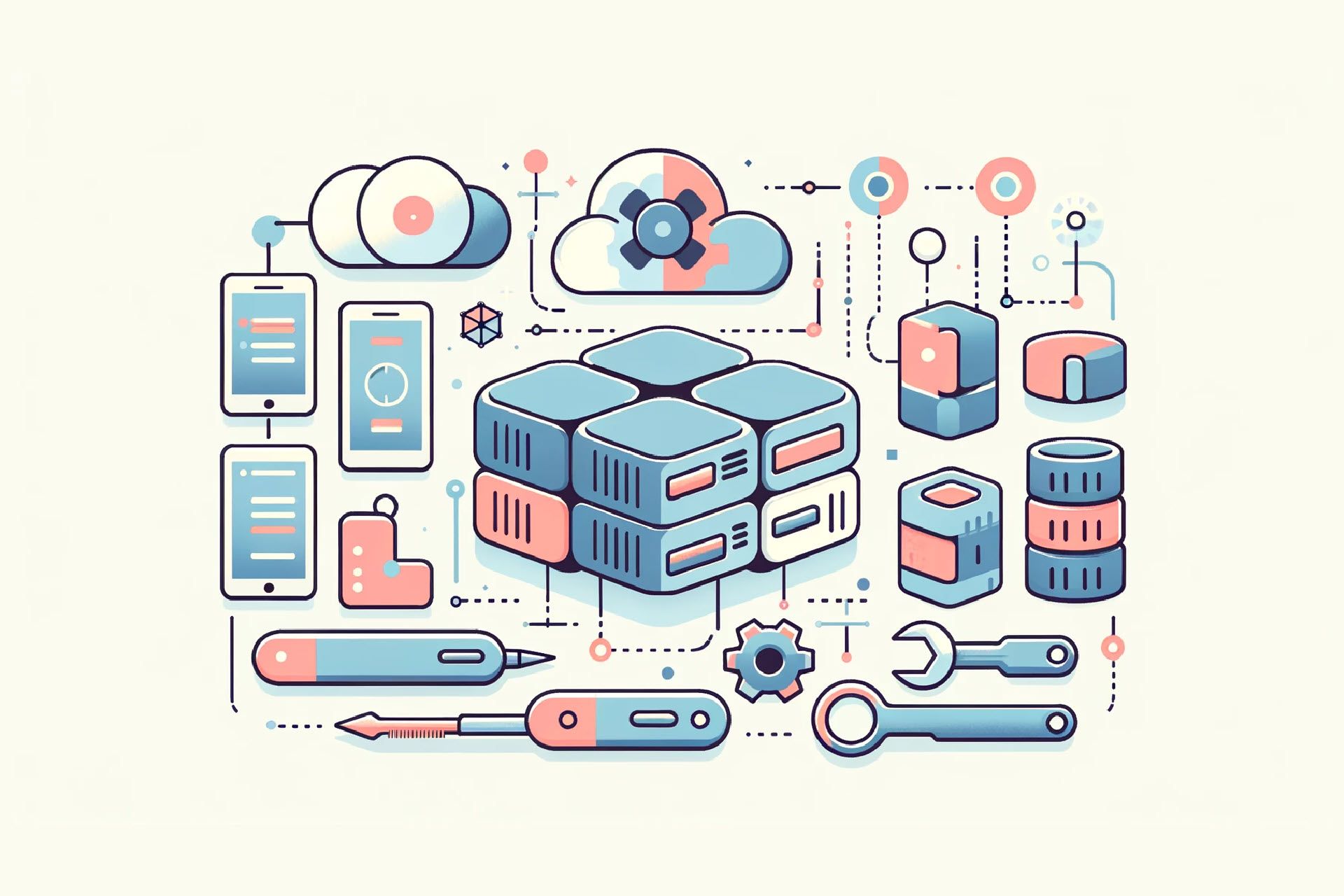Monitoring Docker containers is essential for maintaining their performance, reliability, and security. With the growing complexity of containerized applications, having the right tools to track resource usage, identify issues, and optimize workloads is more important than ever.
This article highlights the top Docker container monitoring tools, providing insights into their features, advantages, disadvantages, and pricing structures.

14 Best Docker Container Monitoring Tools
Here are the best Docker container monitoring tools available:

1. Prometheus
Prometheus is an open source systems monitoring and alerting toolkit originally developed by SoundCloud. Now a standalone project and a part of the Cloud Native Computing Foundation (CNCF), Prometheus has been widely adopted for monitoring containerized applications. It excels in collecting time-series data and providing powerful querying capabilities through its PromQL language.
Features
- Multi-dimensional data model. Uses key-value pairs for flexible metric labeling.
- Powerful query language (PromQL). Enables complex querying and data analysis.
- Built-in time-series database. Stores metrics efficiently without external dependencies.
- Service discovery and static configuration. Automatically discovers targets in dynamic environments.
- Alert manager integration. Handles alert notifications and silencing.
Pros
- Highly customizable. Flexible configuration options suit various monitoring needs.
- Strong community support. Has extensive documentation and active development.
- Efficient data storage. Optimized for high performance and scalability.
- Easy integration. Works well with Grafana for data visualization.
Cons
- Steep learning curve. Requires time to master PromQL and configuration.
- Limited long-term storage. Not ideal for retaining historical data over extended periods.
- No built-in dashboarding. Relies on external tools for visualization.
Pricing
- Free and open source. Prometheus is free to use under the Apache 2.0 License.

2. Grafana
Grafana is an open-source analytics and interactive visualization platform developed by Grafana Labs. While not a monitoring tool by itself, it integrates seamlessly with Prometheus and other data sources to provide rich dashboards and visual insights into Docker container metrics.
Features
- Customizable dashboards. Users create and share dynamic dashboards with interactive panels.
- Multiple data source support. Connects with Prometheus, InfluxDB, Elasticsearch, and more.
- Alerting capabilities. Alerts can be configured based on metrics thresholds.
- Plugin ecosystem. Has extended functionality with a wide range of plugins.
- User management. Supports teams, roles, and permissions.
Pros
- Intuitive interface. User-friendly UI simplifies data exploration.
- Flexible visualization options. Offers various graph types and customization.
- Active community. Receives regular updates and community-contributed plugins.
- Seamless integration. Works well with popular monitoring tools.
Cons
- Requires data sources. Depends on external tools for data collection.
- Complex setup for beginners. Can be challenging to configure initially.
- Limited alerting features. Basic compared to dedicated alerting systems.
Pricing
- Free tier. Includes 10k metrics, 50 GB logs, traces, and profiles (14-day retention), 2,232 host hours for application observability, Kubernetes monitoring for 2.2k host/37k container hours, 50k frontend sessions, 100k synthetic tests, and 500 k6 virtual user hours, limited to 3 active users.
- Pro plan. Starts at $19 monthly with pay-as-you-go pricing for usage exceeding the free tier. Includes optional Enterprise plugins, 30-day retention for logs, traces, and profiles, and 8x5 support. Key rates: $8 per 1k metrics, $0.50 per GB logs, and $0.04 per host hour.
- Premium bundle. Starts at $299 monthly, doubles usage limits from Pro, includes Enterprise plugins, 24x7 support, and extended retention options. Key features include 20k metrics, 100 GB logs, 3,720 host hours, and 1,000 k6 virtual user hours.
Prometheus and Grafana are commonly used together to monitor and visualize metrics in real time. Read our article to understand how they work together.

3. Datadog
Datadog is a monitoring and analytics platform for cloud-scale applications, developed by Datadog Inc. It offers comprehensive monitoring of servers, databases, tools, and services, including Docker containers. Datadog provides end-to-end visibility into the performance of containerized applications.
Features
- Unified platform. Combines infrastructure monitoring, APM, and log management.
- Container-specific insights. Provides real-time visibility into container performance.
- Auto-discovery. Automatically detects and monitors new containers.
- Integration library. Supports over 450 integrations with technologies and services.
- Machine learning alerts. Uses anomaly detection for proactive monitoring.
Pros
- Easy to deploy. Boasts simple agent installation and configuration.
- Scalable monitoring. Handles large-scale container environments efficiently.
- Rich dashboards. Offers pre-built and customizable dashboards for quick insights.
- Comprehensive analytics. Provides deep dive into metrics, traces, and logs.
Cons
- Cost. High pricing for extensive environments.
- Data retention limits. Retention periods may require upgrading plans.
- Complex pricing model. Multiple tiers and add-ons can be confusing.
Pricing
- Free tier. Supports up to 5 hosts with 1-day metric retention. Includes standard events and metrics, unlimited alerts, 5 containers per host, and 100 custom metrics per host.
- Pro plan. Starts at $15 per host per month (billed annually, $18 on-demand). Offers 800+ integrations, out-of-the-box dashboards, host and container maps, and 15-month metric retention. Includes monitoring for 10 containers per host, 200 custom metrics per host, anomaly detection, and automated insights.
- Enterprise plan. Starts at $23 per host per month (billed annually, $27 on-demand). Adds advanced features such as machine learning-based alerts, live process monitoring, single sign-on, and customizable 15-month metric retention. Includes 10 containers per host and 200 custom metrics per host.
- DevSecOps Pro plan. Starts at $22 per host per month (billed annually, $27 on-demand). Includes all Pro plan features with additional security capabilities such as cloud security posture management, Kubernetes security posture management, vulnerability management, and compliance mapping.
- DevSecOps Enterprise plan. Starts at $34 per host per month (billed annually, $41 on-demand). Offers advanced risk detection with file integrity monitoring, cloud workload security, and a container allotment of 20 per host. Designed for enhanced threat detection and compliance.
- Container pricing. Pro and Enterprise plans include free monitoring for 5 or 10 containers per host, with additional containers billed hourly. Discounts are available for prepaid containers and deployments exceeding 500 hosts per month.

4. Dynatrace
Dynatrace is an AI-powered, full-stack monitoring platform developed by Dynatrace LLC. It provides automatic and intelligent observability into applications, infrastructure, and user experience, including Docker containers and microservices architectures.
Features
- OneAgent technology. Enables automatic instrumentation of applications and containers.
- AI-driven analytics. Detects anomalies and pinpoints root causes.
- Automatic topology discovery. Maps dependencies between services and containers.
- Real user monitoring. Tracks user interactions and performance impact.
- Cloud-native support. Integrates with Kubernetes, OpenShift, and cloud platforms.
Pros
- Automated monitoring. Reduces manual configuration efforts.
- High scalability. Suitable for large, dynamic environments.
- End-to-end visibility. Covers from frontend to backend services.
- Performance optimization. Identifies bottlenecks and optimization opportunities.
Cons
- Premium pricing. Higher cost compared to competitors.
- Steep learning curve. Advanced features require training.
- Resource consumption. The agent uses significant system resources.
Pricing
- Free trial. Dynatrace offers a free trial for all their services.
- Full-stack monitoring. $0.08/hour for 8 GiB hosts, offering complete observability for applications, networks, and microservices. Includes Kubernetes monitoring, code-level insights, and AI-powered root cause analysis.
- Infrastructure Monitoring. $0.04/hour for any size host, providing observability for cloud platforms, containers, and networks. Includes unlimited container monitoring, 600+ integrations, and AI-driven analytics.
- Kubernetes platform monitoring. $0.002/hour per pod for insights into clusters, workloads, and events. Features out-of-the-box dashboards, smart alerting, and integration with Prometheus metrics and logs.
- Application security. $0.018/hour for 8 GiB hosts, offering continuous vulnerability detection, risk analysis, and AI-assisted prioritization. Includes detailed reporting and runtime context.
- Real user monitoring. $0.00225/session, capturing user interactions across mobile, hybrid, and single-page apps. Provides end-to-end transaction visibility and session replay for troubleshooting.
- Synthetic monitoring. $0.001/request for monitoring workflows, APIs, and browser transactions. Offers real browser playback, low-latency execution, and private location monitoring.
- Log management & analytics. $0.20/GiB for ingestion and $0.02/GiB/day for retention. Enables efficient log analysis with scalable storage through Dynatrace’s Grail platform.

5. New Relic
New Relic is a cloud-based observability platform that offers a suite of products for monitoring applications, infrastructure, logs, and user experiences, providing insights into Docker container performance.
Features
- APM and infrastructure monitoring. Provides deep visibility into application and container metrics.
- Kubernetes cluster explorer. Visualizes Kubernetes clusters and workloads.
- Distributed tracing. Follows requests through microservices and containers.
- Integrations. Supports many technologies and cloud services.
- Alerting and AI ops. Offers proactive notifications and anomaly detection.
Pros
- Unified platform. Centralizes monitoring data for easy access.
- Scalable solution. Handles small to enterprise-level environments.
- Customizable dashboards. Tailors visualizations to specific needs.
- Strong support. Provides documentation and customer assistance.
Cons
- Pricing complexity. Usage-based makes it difficult to predict costs.
- Learning curve. Advanced features require time to learn.
- Performance overhead. Agents impact application performance slightly.
Pricing
- Free tier. Available with 100 GB of free data ingest monthly and unlimited free basic users.
- Paid plans. Start at $49 per user per month and $0.35 per GB beyond 100 GB.

6. Sysdig
Sysdig is a container intelligence platform that offers security, monitoring, and troubleshooting solutions specifically designed for containerized environments and microservices.
Features
- Container-native monitoring. Provides deep visibility into container metrics and events.
- Prometheus compatibility. Integrates with Prometheus metrics and alerting.
- Security and compliance. Includes vulnerability management and runtime security.
- Kubernetes support. Provides insights into clusters, namespaces, and pods.
- ServiceVision. Understands service-level performance across containers.
Pros
- Unified security and monitoring. Combines observability with security features.
- Container expertise. Tailored for Docker and Kubernetes environments.
- Scalable architecture. Handles dynamic container workloads effectively.
- Open-source foundation. Built on open-source technologies like Falco.
Cons
- Pricing model. Expensive for comprehensive feature sets.
- Learning curve. Advanced features require training.
- Limited non-container support. Best suited for containerized applications.
Pricing
- Custom pricing. You must contact their sales team for a quote.

7. SolarWinds Server & Application Monitor
SolarWinds Server & Application Monitor provides comprehensive monitoring for servers and applications, including support for Docker containers and virtualized environments.
Features
- Application-centric monitoring. Focuses on application performance and availability.
- Docker monitoring templates. Has pre-built templates for container metrics.
- Hardware health monitoring. Tracks physical server components.
- Dependency mapping. Visualizes relationships between applications and servers.
- Custom scripting. Allows for extending monitoring capabilities.
Pros
- Easy to deploy. Has user-friendly installation and setup.
- Extensive templates. Offers a wide range of out-of-the-box monitoring templates.
- Scalable solution. Suitable for small to large environments.
- Integration. Works with other SolarWinds products for unified monitoring.
Cons
- Windows-centric. Primary focus on Windows environments.
- Complex licensing. Multiple modules and add-ons complicate pricing.
- UI limitations. Interface feels outdated compared to modern tools.
Pricing
- Free trial. SolarWinds offers a 30-day free trial for Server & Application Monitor.
- Custom pricing. You must contact their sales team for a quote.

8. ManageEngine Applications Manager
Developed by ManageEngine, a division of Zoho Corporation, Applications Manager offers application performance monitoring for both on-premises and cloud environments, including Docker containers.
Features
- Real-time monitoring. Tracks performance metrics and availability.
- Docker monitoring. Provides insights into container resource usage.
- Application discovery and mapping. Automatically detects applications and dependencies.
- Synthetic transaction monitoring. Simulates user interactions for proactive monitoring.
- Customizable dashboards and reports. Tailors visualizations to organizational needs.
Pros
- Affordable pricing. Offers competitive pricing for SMBs and enterprises.
- User-friendly interface. Has an intuitive UI for easy navigation.
- Wide technology support. Monitors a variety of applications and platforms.
- Flexible deployment. Available as on-premises or cloud solution.
Cons
- Limited scalability. Not ideal for extremely large environments.
- Customization complexity. Advanced configurations are challenging to implement.
- Less community support. Has a smaller user community compared to open-source tools.
Pricing
- Free edition. Monitors up to 5 applications or servers.
- Professional edition. Starts at $395 annually for up to 10 monitors with one user.
- Enterprise edition. Starts at $3,995 for up to 100 monitors with one user.
- Free trial. Available for both the professional and enterprise versions.

9. Splunk
Splunk is a data analysis platform now owned by Cisco. It specializes in machine data and logs but also offers solutions for monitoring Docker containers through its IT Operations and Observability suites.
Features
- Data ingestion and indexing. Collects and indexes data from various sources.
- Container monitoring. Provides visibility into container performance and logs.
- Machine learning analytics. Detects patterns and predicts issues.
- Custom dashboards. Build visualizations for metrics and logs.
- Alerting and reporting. Configurable alerts and comprehensive reports.
Pros
- Powerful search capabilities. Advanced querying with the Splunk Processing Language (SPL).
- Scalable architecture. Effectively handles large volumes of data.
- Extensive integrations. Supports many data sources and technologies.
- Enterprise-grade security. Robust identity and access management and data encryption.
Cons
- High cost. Licensing and data ingestion fees are expensive.
- Complexity. Steeper learning curve for SPL and advanced features.
- Resource-intensive. Requires significant infrastructure for large deployments.
Pricing
- Free trial. Splunk offers a free trial for all observability solutions.
- Infrastructure Monitoring. Starts at $15 per host/month (billed annually) and includes real-time hybrid cloud monitoring, 200+ integrations, Kubernetes Navigator, and AI-driven real-time alerts.
- Application Performance Monitoring (APM). Priced at $55 per host/month (billed annually), it offers full-fidelity trace ingestion, dependency-aware service maps, and AI-driven analytics for rapid root cause analysis.
- Real User Monitoring (RUM). Priced at $14 per 10,000 sessions. Provides real-time visibility into frontend user interactions and end-to-end session tracking.
- Synthetic Monitoring. Starts at $1 per 10,000 uptime requests. Includes browser, API, and uptime tests with detailed web performance metrics and CI/CD integration.
- Splunk On-Call. Priced at $5 per user/month (up to 10 users, billed annually). Offers automated incident response, mobile-first workflows, and seamless collaboration tools.
- Log Management & Analytics. $0.20 per GiB for log ingestion and $0.02 per GiB/day for retention. Provides scalable log analysis with high-efficiency storage

10. cAdvisor
Container Advisor (cAdvisor) is an open-source project developed by Google. It provides resource usage and performance characteristics of running containers, focusing primarily on Docker containers.
Features
- Resource monitoring. Collects CPU, memory, network, and disk usage statistics.
- Per-container insights. Provides data for individual containers.
- API and web UI. Exposes metrics through a REST API and web interface.
- Integration support. Works with Prometheus, InfluxDB, and other monitoring tools.
- Lightweight design. Minimal overhead on system resources.
Pros
- Simple deployment. Easy to run as a Docker container.
- Real-time metrics. Provides up-to-date performance data.
- Extensible. Can be integrated into larger monitoring solutions.
Cons
- Limited features. Focuses solely on container resource metrics.
- No alerting or analytics. Lacks advanced monitoring capabilities.
- Minimal support. Has a smaller community and less frequent updates.
Pricing
- Free and open source. No cost to use and modify.

11. Sumo Logic
Sumo Logic is a cloud-native machine data analytics platform. It provides real-time insights into logs, metrics, and events, including monitoring capabilities for Docker containers.
Features
- Unified logs and metrics. Combines data for comprehensive analysis.
- Container and orchestration support. Integrates with Docker and Kubernetes.
- Advanced analytics. Offers machine learning for anomaly detection.
- Dashboards and visualization. Customizable views for monitoring data.
- Scalable cloud platform. Handles large-scale data ingestion and processing.
Pros
- Cloud-native solution. Simplifies deployment and scaling.
- Real-time monitoring. Provides immediate insights into system performance.
- Security analytics. Includes features for security monitoring and compliance.
- Flexible data ingestion. Supports various data sources and formats.
Cons
- Cost considerations. Pricing increases sharply with high data volumes.
- Learning curve. Advanced features require time to understand.
- Dependence on cloud. Not suitable for on-premises-only environments.
Pricing
- Free plan. Includes limited logging, metrics, and tracing capacities (1GB/day log ingest, 3,000 metrics DPM/day, 1.5GB tracing/day) with 7-day log retention and community support.
- Essentials plan. Offers unlimited log, metrics, and tracing capacity with up to 365-day retention, real-time alerting, and standard 8x5 support. Features like AI-driven alerting, customizable dashboards, and compliance integrations are included. This plan has custom pricing, you must contact the sales team for a quote.
- Enterprise suite. Designed for larger organizations with customizable data retention and capacity. Adds advanced features such as automated log-level detection, root cause exploration, and enterprise audit logging. Includes 24/7 support. This plan has custom pricing, you must contact the sales team for a quote.
- Flex plan. Provides unlimited data ingest with pay-as-you-go analytics, allowing customers to adjust configurations to their specific use cases. Retention and features are customer-defined, with optional premium support. Use the Sumo Logic pricing estimator to calculate the costs of using this plan.
- Free trial. Sumo Logic offers a free trial for their paid solutions.

12. Sematext
Sematext is a monitoring and log management platform. It offers performance monitoring, log management, and real user monitoring for applications and infrastructure, including Docker containers.
Features
- Container monitoring. Provides insights into container performance and resource usage.
- Log management. Centralizes logs from containers and applications.
- Real user monitoring. Tracks user interactions and experiences.
- Synthetic monitoring. Simulates user actions to test performance.
- Alerts and anomaly detection. Has configurable thresholds and machine learning-based alerts.
Pros
- Unified platform. Combines monitoring and logging in one solution.
- Flexible deployment. Available as SaaS or on-premises.
- Competitive pricing. Offers transparent and affordable pricing plans.
- Easy integration. Supports many integrations and APIs.
Cons
- Less brand recognition. Smaller market presence compared to major competitors.
- Feature maturity. Some advanced features aren’t mature.
- Support limitations. Has fewer support resources than many competitors.
Pricing
- Monitoring plans. Start at $2.8 per monthly host.
- Logging plans. Start at $5 per month for 500MB/day ingestion and 7 days of retention.
- Free trial. A 14-day trial is available for all products.

13. Nagios
Nagios is an open-source monitoring system. It monitors systems, networks, and infrastructure, with community-contributed plugins available for Docker container monitoring.
Features
- Infrastructure monitoring. Tracks servers, switches, applications, and services.
- Alerting system. Notifies users of outages and performance issues.
- Extensible architecture. Supports plugins for additional functionality.
- Configuration wizards. Simplifies setup for common monitoring tasks.
- Reporting and graphing. Provides performance data over time.
Pros
- Mature platform. Established tool with a long history.
- Large community. Has an extensive plugin library and community support.
- Flexible. Highly customizable to meet specific needs.
- Open-source option. Free to use under the GPL license.
Cons
- Complex configuration. Time-consuming to set up and manage.
- Limited container focus. Not specifically designed for container environments.
- Outdated interface. The UI isn’t modern or intuitive.
Pricing
- Nagios Core. Free and open-source version.
- Nagios XI. The enterprise version offers more features with pricing starting at $4,490 for 100 nodes.

14. Elastic Stack (ELK Stack)
The Elastic Stack, commonly known as ELK Stack, is developed by Elastic NV. It combines Elasticsearch, Logstash, and Kibana to provide a powerful solution for log management and analytics, including monitoring Docker containers.
Features
- Data ingestion. Logstash collects and processes data from various sources.
- Search and analytics. Elasticsearch indexes data for fast querying.
- Visualization. Kibana offers dashboards and visualizations of data.
- Beats agents. These lightweight data shippers collect and forward data (e.g., Metricbeat for Docker metrics).
- Scalability. Designed to handle large volumes of data.
Pros
- Powerful search capabilities. Offers fast and flexible querying.
- Customizable dashboards. Tailors visualizations to specific metrics.
- Open-source foundation. Free to use with a strong community.
- Extensible ecosystem. Has numerous plugins and integrations.
Cons
- Complex setup. Requires configuration of multiple components.
- Resource-intensive. Consumes significant system resources.
- Learning curve. Its advanced features require expertise.
Pricing
- Open-source version. Free under the Apache 2.0 License.
- Elastic cloud. Elastic offers a managed service version of the ELK stack with paid plans and added features starting at $95 monthly.
Check out our comparison of the ELK Stack vs. Splunk.

How to Choose the Best Docker Container Monitoring Tool?
To choose the best Docker container monitoring tool, focus on your operational needs and the tool's integration capabilities. Start by identifying the specific metrics and insights you need. If your priority is resource tracking, a lightweight tool might suffice, but if you require in-depth performance monitoring, log aggregation, or security features, choose a comprehensive solution.
Next, ensure the tool integrates seamlessly with your existing infrastructure, such as container orchestration platforms like Kubernetes, cloud environments, or other monitoring systems. A tool that aligns well with your workflow will simplify setup and management.
Finally, consider the scalability and future growth of your containerized environment. Choose a monitoring tool that can handle your current workloads but also the increased complexity and volume of containers as your applications expand. A scalable solution ensures you won’t need to switch tools as your needs evolve, saving time and resources in the long run.

If your organization is looking for reliable and scalable solutions to support Docker container monitoring, consider phoenixNAP’s Bare Metal Cloud.
With its high-performance servers and seamless Kubernetes integration, Bare Metal Cloud is optimized for running containerized applications at scale. It provides powerful compute resources, automated provisioning, and support for container orchestration platforms, making it an ideal choice for Docker monitoring.
Contact us today to enhance your containerized infrastructure.
Docker Container Monitoring FAQs
Below, we address some of the most common questions about monitoring Docker containers, including its purpose, best practices, and the key metrics to track.
What Is Container Monitoring?
Container monitoring involves collecting, analyzing, and displaying metrics and logs from containerized applications. This process focuses on tracking resource usage, performance metrics, and application-specific data to ensure containers function optimally and reliably. Effective monitoring tools identify performance bottlenecks, predict failures, and provide insights into overall container health, helping organizations maintain seamless operations.
Why Do You Need to Monitor Docker Containers?
Monitoring Docker containers is essential for maintaining a reliable and efficient application environment. Here’s why it matters:
- Ensuring performance. Monitoring helps you identify and address performance bottlenecks that could slow down application responsiveness, ensuring a smooth user experience.
- Maintaining availability. By detecting issues early, you can prevent downtime and deliver consistent service to users by keeping systems operational and reliable.
- Optimizing resource usage. Proper monitoring ensures efficient allocation of CPU, memory, and other resources, avoiding scenarios where resources are either overused or underutilized.
- Enhancing security. Continuous observation of container activity helps detect unusual behavior, safeguarding your environment against unauthorized access or potential vulnerabilities.
- Ensuring compliance. Monitoring enables auditing of container activity to meet regulatory standards while also tracking resource usage for better transparency and accountability.
- Supporting scalability. By keeping an eye on container performance, you can anticipate and manage resource demands as your applications scale to handle growing workloads.
What Are Good Docker Container Monitoring Practices?
To ensure effective container monitoring, consider adopting the following best practices:
- Define key metrics. Determine which metrics are most relevant to your applications and infrastructure, such as CPU usage, memory consumption, and application response times.
- Use automation. Automate monitoring setup and configuration to minimize manual errors and reduce operational overhead.
- Implement alerting. Configure alerts for critical thresholds to respond quickly to performance issues or resource limits.
- Visualize data. Leverage dashboards to present metrics in an easy-to-understand format, providing quick insights into container health.
- Integrate logs and metrics. Correlate log data with performance metrics to gain a holistic view of container operations and troubleshoot effectively.
- Regularly review configurations. Update monitoring settings as your application architecture evolves to ensure continued relevance and accuracy.
- Monitor dependencies. Include external dependencies such as databases, APIs, or cloud services that interact with containers in your monitoring scope.
- Perform regular audits. Periodically evaluate your monitoring setup to identify gaps and areas for improvement.
What Is the Easiest Way to Monitor Logs from Docker Containers?
The simplest way to monitor logs from Docker containers is to use Docker's built-in logging drivers, which route container logs to a centralized logging system. You can also integrate tools such as the Elastic Stack, Fluentd, or Logstash to aggregate, analyze, and visualize logs. These tools streamline troubleshooting by providing a unified view of logs from all containers, enabling faster identification of issues and patterns.
For an in-depth analysis of the best way to manage Docker container logs, read our article.
What Metrics Should You Monitor in Docker Containers?
To maintain optimal performance and reliability, focus on tracking these critical metrics:
- CPU usage. Monitor CPU utilization to identify overconsumption and ensure workloads are distributed efficiently.
- Memory usage. Track memory consumption to prevent leaks and ensure containers have adequate resources for smooth operation.
- Network I/O. Observe network throughput, latency, and packet loss to identify potential network-related bottlenecks.
- Disk I/O. Monitor read/write operations and disk space usage to detect storage issues that could affect application performance.
- Container health. Check the status, uptime, and restart frequency of containers to ensure stability.
- Application-specific metrics. Collect data specific to your application, such as response times, error rates, or transaction counts, to measure its performance accurately.
- File system usage. Track usage of temporary files or mounted volumes to prevent disk saturation.
- Container lifecycle events. Log events such as container start, stop, and restart to gain insights into operational patterns and potential issues.



